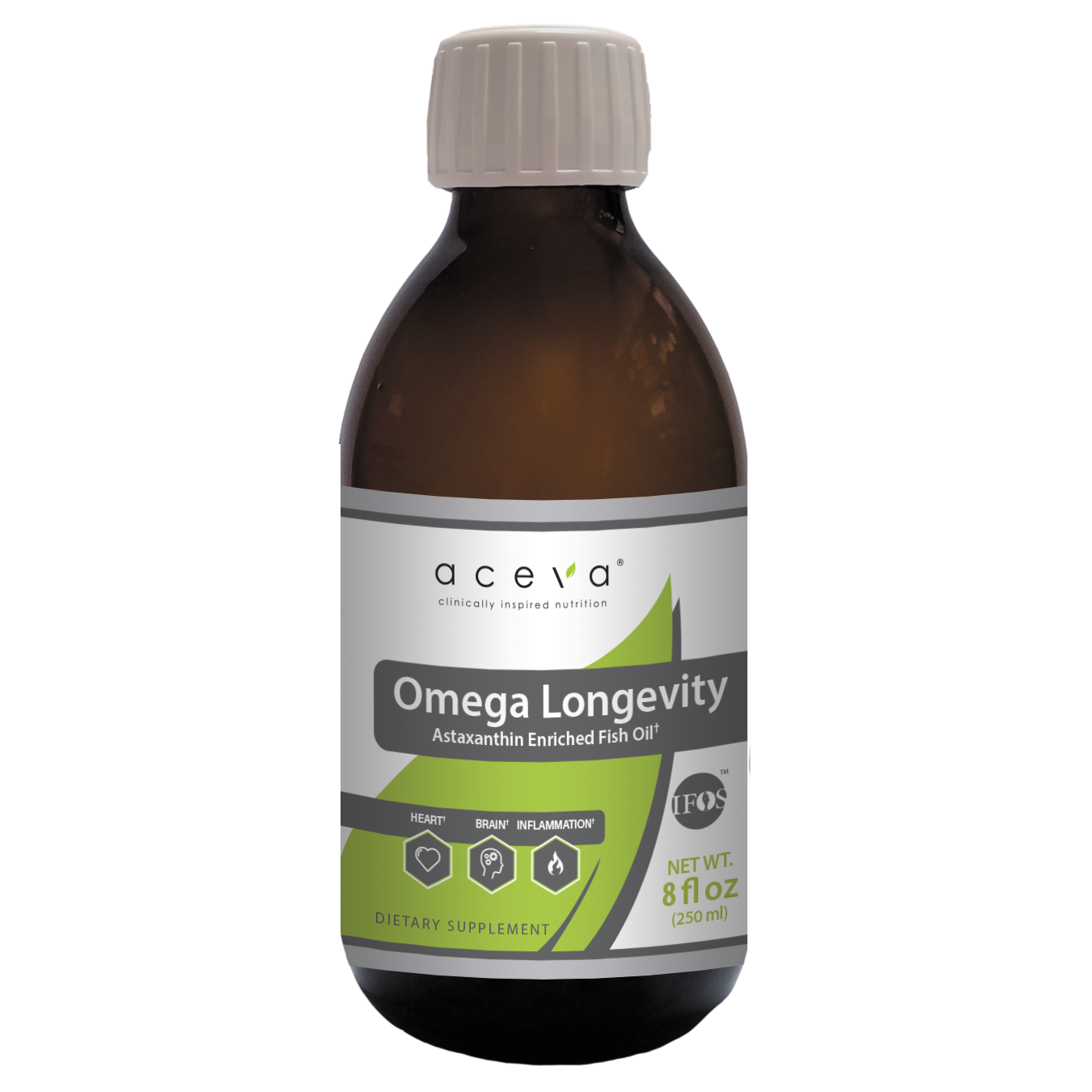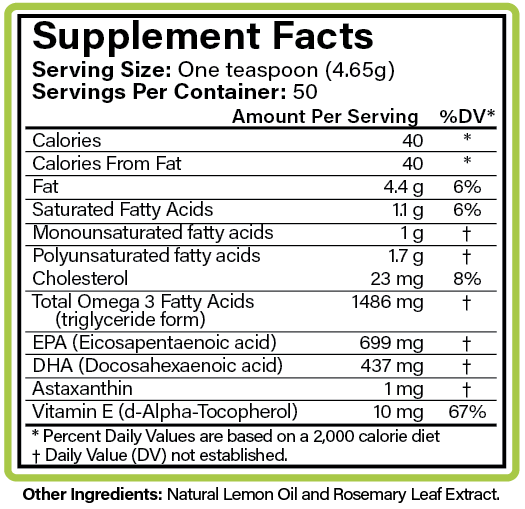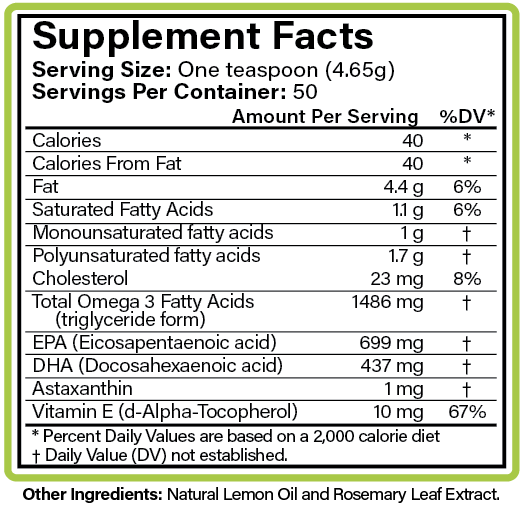

Overall Health Support
Boost your overall health with Omega Longevity, a superior, molecularly-distilled fish oil rich in essential omega-3 fatty acids. Sourced from herring, mackerel, and anchovies, this blend is not only in its natural, digestible triglyceride form but also fortified with astaxanthin, a potent antioxidant. Together, they champion brain, skin, eye, cardiovascular, and immune health, and support athletic endurance and recovery.
Pristine Source and Ultimate Protection
Omega Longevity stands out as a premium, IFOS certified fish oil sourced from sardine, mackerel, and anchovies from renowned locales such as Peru, Chile, and Morocco. The significance of IFOS certification cannot be overstated – it represents the zenith of fish oil purity, potency, and freshness standards. Ensuring the benefits of omega-3 fatty acids remain unblemished, our production process employs rigorous measures to prevent oxidation. We store our oils in oxygen-free conditions, use argon gas shielding, and bottle under these protective conditions. The oil is further safeguarded with a unique antioxidant blend featuring 1 mg of astaxanthin per tsp, and packaged in amber glass bottles to deter oxidative light damage. This meticulous approach ensures peak potency and efficacy.
Dive Into the Research:
Omega 3 fatty acids (O3FAs) are essential fatty acids that cannot be produced by the human body and therefore must be consumed in the diet or taken as a supplement. These fatty acids influence the entire human body, as they are integral in the cardiovascular, brain, reproductive, hormonal, and immune systems as well as support healthy blood flow eye, and joint health. Specifically, O3FAs are components of the phospholipids that form the structures of cell membranes that are especially high in the retina, brain, and sperm in the form of docosahexaenoic acid (DHA).(¹) In addition to their structural role in cell membranes, these O3FAs along with omega 6 fatty acids (O6FAs) provide energy for the body and are used to form signaling molecules called eicosanoids which have a wide spectrum of functions in the body’s cardiovascular, pulmonary, immune, and endocrine systems. (²,³)
The Institute of Medicine (IOM) recommends that male adults consume at least 1600 mg (1.6 g) O3FA and women 1300 mg (1.3 g) while most children need around 700 - 1200 mg (0.7-1.2g) O3FA daily depending on their age. (⁴) Based on recent National Health and Nutrition Examination Survey (NHANES) research data, dietary consumption of DHA and EPA contributes to an extremely small amount to total daily omega-3 intakes for the majority of the population. Children consumed an average of 40 mg while teens and adults consumed an average of 90 mg. (⁵) which is orders of magnitude less than the recommended daily amount and highlights the importance of supplementation.
In nature, O3FAs occur as alpha-linolenic acid (ALA), found mostly in plant foods such as flaxseed, and as long-chain eicosapentaenoic acid (EPA) and (DHA), which are primarily derived from algae and cold-water fish that consumed these algae such as salmon, mackerel, herring, and sardines. In very small amounts, the body is able to slowly convert the shorter chain ALA to the longer-chain, more physiologically active, EPA and DHA. However, many people lack the enzymes delta-5 and delta-6 desaturase necessary to make the conversion and/or consume too many omega 6 fatty acids that lead to saturating these enzymes, making dietary intake of EPA and DHA essential. It has been estimated that less than 15% of dietary ALA is actually converted to EPA and DHA in the liver.(⁶)
In addition, there have been many changes to modern-day diets over the last century that have resulted in insufficient O3FA intake and an overconsumption O6FAs. In general, O3FA’s are anti-inflammatory while O6FAs are pro-inflammatory. A balanced intake of these fatty acids is needed that short periods of inflammation can occur when needed such as during an acute injury but subside afterwards to bring the body back to homeostasis. Based on ancestral diets, consumption of the two essential fatty acids should be consumed at a ratio somewhere around 2:1 in favor of O6FA. Today, however, the ratio in the typical American diet is approximately 20:1 favoring omega 6 fatty acids.. When this imbalance occurs, it creates a pro-inflammatory environment in the body which can cause a whole host of problems including dysfunction of the cardiovascular, reproductive, immune, hormonal, and nervous systems.
O3FAs are one of the most clinically validated supplements in the United States and many other countries. It should not be surprising to learn the therapeutic effects of O3FA supplements having known their many essential physiological functions.
Collapsible content

Suggested Use
As a dietary supplement, take one (1) teaspoon daily with food or as recommended by your healthcare professional.
Storage Information: After opening, refrigerate and use within two months for best quality. Shake well before each use.
Formulated To Be Free of Allergens Derived From:
Wheat, gluten, soy, dairy, eggs, crustacean shellfish, tree nuts, peanuts, artificial preservatives, sweeteners, color and flavors.





